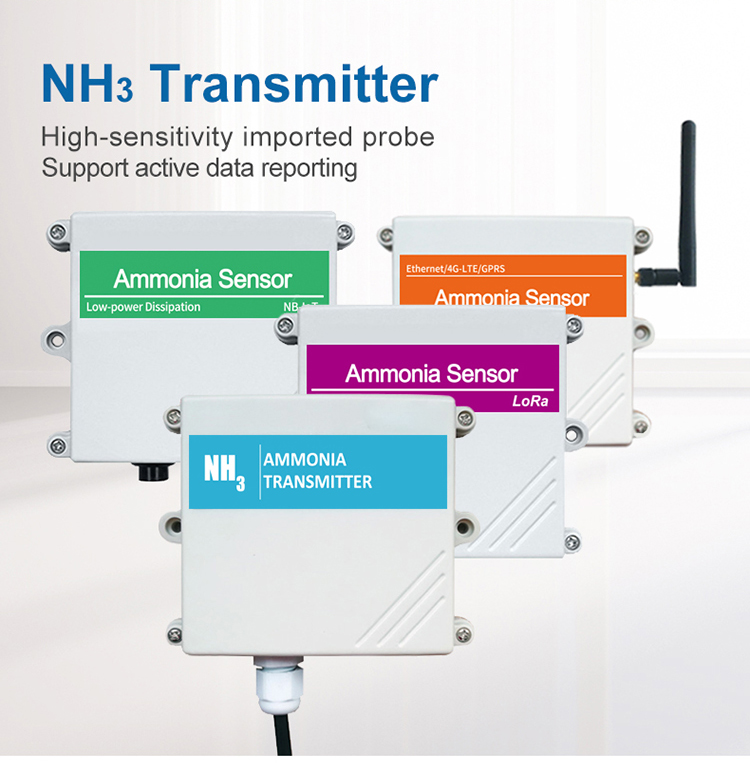NH3 sensor
Ammonia (NH3) sensors are a vital component of precision agriculture that help farmers monitor soil pH and nitrogen content. In this article, we will discuss the importance of monitoring soil pH and nitrogen levels, how NH3 sensors work, and their benefits in agriculture.

Why is Monitoring Soil pH and Nitrogen Content Important in Agriculture?
Soil pH and nitrogen content are two critical factors in agricultural yield management. Soil pH is a measure of the soil’s acidity or alkalinity, ranging from 0 to 14. A pH value of 7 is neutral, values below 7 indicate acidic conditions, and values above 7 indicate alkaline conditions. Soil pH affects nutrient availability and microbial activity in the soil. Acidic soils limit nutrient availability, while alkaline soils can cause nutrient toxicity.
Nitrogen is one of the primary nutrients needed by plants for growth and development. Nitrogen deficiency can lead to stunted growth, reduced crop yields, and poor plant quality. On the other hand, excess nitrogen can cause environmental pollution, such as eutrophication of water bodies.
By monitoring soil pH and nitrogen content, farmers can adjust fertilizer application rates and timing, optimize crop growth conditions, and reduce environmental impacts.
How Do NH3 Sensors Work?
NH3 sensors are electrochemical sensors that detect the presence of ammonia in the soil air and provide an output signal proportional to the concentration of ammonia. These sensors operate based on the principle of gas diffusion. As NH3 diffuses through a membrane, it reacts with an electrolyte, producing a current proportional to the NH3 concentration.
NH3 sensors can provide continuous real-time data on NH3 levels in the soil, allowing farmers to make informed decisions on fertilizer application rates and timing.
What Benefits Does an NH3 Sensor Provide in Agriculture?
- Accurate and Real-time Data: NH3 sensors provide accurate and real-time data on NH3 levels in the soil. This data helps farmers optimize fertilizer application rates and timing, reduce input costs, improve crop yields, and minimize environmental impacts.
- Site-specific Nutrient Management: By mapping the NH3 levels in different parts of the field, farmers can apply fertilizers only where they are needed, reducing waste and minimizing pollution.
- Early Warning of Potential Issues: NH3 sensors can provide early warning of potential issues related to soil conditions. For example, if the NH3 levels are too high, it may indicate over-fertilization, leading to environmental pollution. If the NH3 levels are too low, it may indicate a nitrogen deficiency, leading to poor crop growth and reduced yields.
- Improved Efficiency: NH3 sensors help farmers use fertilizers more efficiently by applying them at optimal rates and timings. This leads to improved fertilization efficiency, reduced input costs, and increased crop yields.
Video – Ammonia Sensor:
This wall-mounted NH3 sensor is made of waterproof and dust-proof materials, with a high degree of protection, and can be used in harsh environments. Our company provides a free cloud platform to monitor the data of one or more devices. Support customization and secondary development.
Conclusion
In conclusion, NH3 sensors are essential tools in precision agriculture for monitoring soil pH and nitrogen content. These devices provide accurate, real-time data on NH3 levels, allowing farmers to make informed decisions on fertilizer application rates and timing. By optimizing nutrient management, farmers can reduce input costs, increase crop yields, and minimize environmental impacts. As the technology continues to evolve, we can expect to see more advanced sensors and data analytics solutions to further improve precision agriculture.